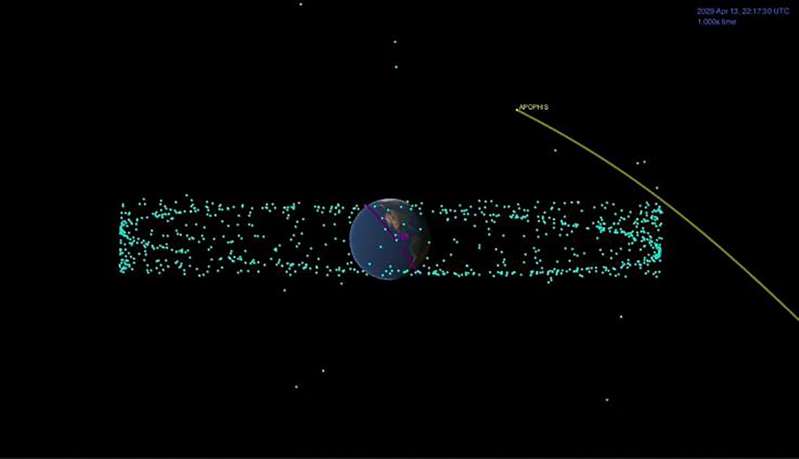

Alternative mission profiles are being explored that should work with an applied delta-V of around 1 m/s, although the mission duration and cost will increase. Re-analysis using better tools and more recent data indicates that 95 cm/s of delta-V is needed instead of 10 cm/s, and that in 2030 Apophis approaches the Moon with too great a velocity for orbital capture in a single pass. NOTE: The orbital slingshot model used for the Apophis capture example below had a significant flaw. This is an archived article and the information in the article may be outdated.International Space Development Conference, May 2011 Please look at the time stamp on the story to see when it was last updated.ĬAPE CANAVERAL, Fla. (AP) - The good news is that scientists have a better handle on asteroid Bennu’s whereabouts for the next 200 years. The bad news is that the space rock has a slightly greater chance of clobbering Earth than previously thought.īut don’t be alarmed: Scientists reported Wednesday that the odds are still quite low that Bennu will hit us in the next century.

“We shouldn’t be worried about it too much,” said Davide Farnocchia, a scientist with NASA’s Center for Near Earth Object Studies at the Jet Propulsion Laboratory in Pasadena, California, who served as the study’s lead author. While the odds of a strike have risen from 1-in-2,700 to 1-in-1,750 over the next century or two, scientists now have a much better idea of Bennu’s path thanks to NASA’s Osiris-Rex spacecraft, according to Farnocchia. “So I think that overall, the situation has improved,” he told reporters. The spacecraft is headed back to Earth on a long, roundabout loop after collecting samples from the large, spinning rubble pile of an asteroid, considered one of the two most hazardous known asteroids in our solar system. The samples are due here in 2023.On Friday, a large asteroid roughly the size of the Eiffel Tower zipped past the Earth. The asteroid posed no hazard to the Earth on this flyby as it was more than 40 times as far away from Earth as the moon. However, on April 13, 2029, Apophis will get closer to the Earth than some of the highest-orbit satellites surrounding the planet. Scientists at the University of Hawaii detected a small Yarkovsky acceleration on the surface of the asteroid Apophis which could influence the asteroid’s path for its 2068 flyby. The Yarkovsky effect is when an asteroid or celestial body changes its orbit due to small push of heat, either from itself expelling gasses, or the gravitational push and shove from celestial bodies including the Sun and Earth. In this instance, the scientists discovered a small thermal reaction which could slightly alter Apophis’s course. ĭuring the week of April 26, members of NASA’s Planetary Defense Coordination Office (PDCO) will participate in a “tabletop exercise” to simulate an asteroid impact scenario. The exercise depicting this fictional event is being led by NASA’s Jet Propulsion Laboratory’s Center for Near Earth Object Studies (CNEOS), allowing NASA’s PDCO and other U.S. The fictitious impact scenario will occur during the 7th IAA Planetary Defense Conference, hosted by the United Nations Office for Outer Space Affairs in cooperation with the European Space Agency agencies and space science institutions, along with international space agencies and partners, to use the fictitious scenario to investigate how near-Earth object (NEO) observers, space agency officials, emergency managers, decision makers, and citizens might respond and work together to an actual impact prediction and simulate the evolving information that becomes available in the event an asteroid impact threat is discovered. Next Century, the Asteroid Might Poke Back” These type of exercises are specifically identified as part of the National Near-Earth Object Preparedness Strategy and Action Plan developed over a three-year period and published by the White House in June 2018. In 2016, humanity launched into the void a spacecraft called OSIRIS-Rex. a spacecraft tasked with taking a piece of the asteroid Bennu and bringing it back to Earth in 2023.

The OSIRIS-Rex data was compiled in a study published earlier this August in the Icarus scientific journal. A study that sought to better understand the trajectory Bennu will take from now and until about the year 2300.


 0 kommentar(er)
0 kommentar(er)
